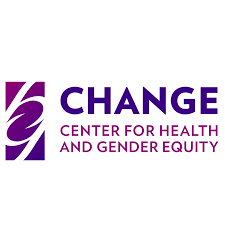The Sexual and Reproductive Health and Rights Index
The Center for Health and Gender Equity (CHANGE) created the Sexual and Reproductive Health and Rights Index: Grading U.S. Global Health Assistance to critically assess the U.S. government’s work on sexual and reproductive health and rights (SRHR) and hold it accountable to its commitments on SRHR by grading it annually.
Why the SRHR Index is Needed
In 1994, at the International Conference on Population and Development (ICPD) in Cairo, approximately 180 countries — including the United States — produced a human rights framework for development assistance that promoted the universal SRHR of women and girls for the first time. After ICPD, U.S. government strategies, policies, and United Nations (UN) stances reflected “sexual and reproductive health and reproductive rights.” It was not until 2015 that the U.S. government recognized sexual rights, and adopted the full term “sexual and reproductive health and rights” in official documents, international statements, and UN negotiations. This positioned the U.S. government on a path to fully embrace a global SRHR agenda.
Through an annual review, the SRHR Index provides public access to information from across U.S. government agencies and health funding streams related to support for global SRHR, and grades commitments, leadership, and funding levels and actions across a comprehensive set of SRHR issues.
This allows users of the SRHR Index to understand how the government is doing within a particular domain of SRHR, and across SRHR as a whole. This, in turn, allows advocates to use the grades to make targeted recommendations on how the government can better promote SRHR through its global health assistance and identify when positive or negative actions have been taken.
How the Index Works
The SRHR Index uses standardized indicators to assess government policies, investments, and programs to grade how global health assistance is, or is not, promoting SRHR globally.
The SRHR Index measures the White House, U.S. Congress, U.S. Department of State, U.S. Agency for International Development (USAID), U.S. Department of Defense (DoD), and U.S. Department of Health and Human Services (HHS) across three domains that represent core funding streams of U.S. global health assistance: family planning (FP), maternal and child health (MCH), and HIV and AIDS. The SRHR Index considers policy and budget for each of these domains, as well as the availability and quality of information used to properly evaluate government actors in each domain.
Ratings are assigned to each policy and budget-related action taken by specific actors (within their scope of power). All actors receive a grade per domain in which they do relevant work. In addition, the U.S. government receives an overall grade for each domain and a final composite grade for SRHR in U.S. global health assistance. The SRHR Index also measures the availability of data needed to assign a grade. Known as the transparency grade, it represents the expectation that the federal government should make data about U.S. global health assistance available, accessible, and informative.
Find more information via this link.
